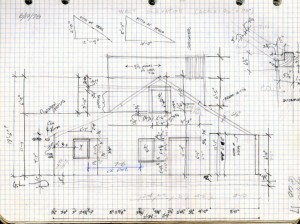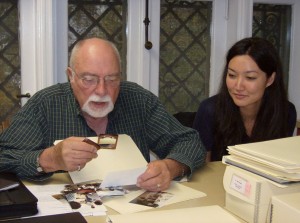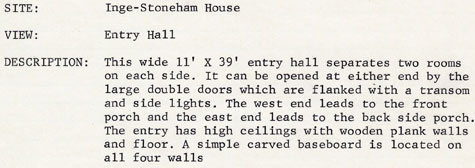Earlier this summer, I wrote about processing the Wayne Bell papers. Because of my resulting familiarity with his work, I went on to work with the records of the Winedale Historical Center, the historic preservation program in the School of Architecture that Bell directed for many years.
When we interviewed Bell, we asked about the unique challenges of preserving historical sites, especially when a property or features of it have deteriorated beyond repair. His answer? You can preserve by creating a historical record. Throughout the Winedale Historical Center records are field notes, site plans, drawings, photographs, oral histories, and other materials kept safe in the Alexander Architectural Archive, documenting important information about buildings from across central and south Texas.

You hope that, with good preservation work, the building will remain. Sometimes, however, disaster strikes. In 1981, just five years after UT historic preservation students worked on the Zimmerscheidt-Leyendecker House in Colorado County, an arsonist destroyed the property. The students’ records are now that much more valuable to maintaining the cultural memory of this home.
By Amanda Keys, processing assistant in the Alexander Architectural Archive and School of Information student focusing on archival enterprise and special collections



